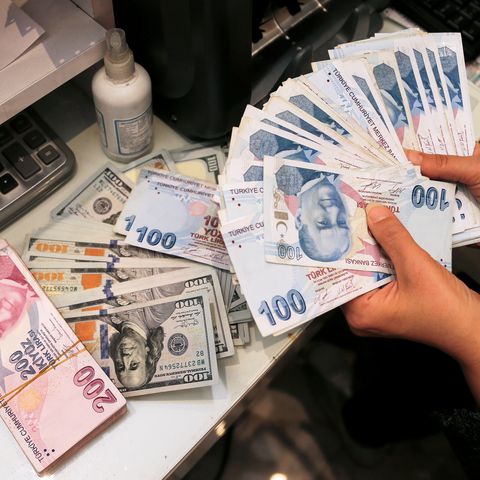Though UV counterfeit detection lamps and counterfeit money pens are of help tools, there are lots of various ways to share with in case a bill is authentic or counterfeit. Physical characteristics of the banknote, like ink, watermarks, and text, are intentional safety measures to help individuals recognize authentic money.

When retail associates figure out how to spot a replica $100 bill, they are able to help reduce the likelihood of a company suffering a loss of profits of thousands of dollars. Here’s a report on eight approaches to determine if a bill is real or counterfeit:
1. Color-shifting Ink
One of the primary things to check to see if a bill is authentic is when the balance denomination at the base right-hand corner has color-shifting ink. Going back to 1996, all bills of $5 or even more have this security feature. In case you hold a fresh series bill (except for the brand new $5 bill) and tilt it backwards and forwards, the numeral from the lower right-hand corner shifts from green to black or from gold to green.
2. Watermark
The watermark is a characteristic security feature of authentic banknotes. Many of the new bills make use of a watermark that is certainly really a replica with the face on the bill. On other banknotes, it is just an oval spot. Here are some items to bear in mind when examining a bill’s watermark:
• The watermark should be visible once you hold the bill up to the light.
• The watermark ought to be for the right side from the bill.
• When the watermark is a face, it must exactly match the eye about the bill. Sometimes counterfeits bleach lower bills and reprint them with higher values, in which case the facial skin wouldn’t match the watermark.
• If you find no watermark or watermark is visible without having to be held up on the light, the bill is usually a counterfeit.
3. Blurry Borders, Printing, or Text
An automated sore point for counterfeit bills is noticeably blurry borders, printing, or text around the bill. Authentic bills are manufactured using die-cut printing plates that creates impressively fine lines, in order that they look extremely detailed. Counterfeit printers are often unfit to be exactly the same level of detail. Take a critical look, especially on the borders, to ascertain if you’ll find any blurred parts inside the bill. Authentic banknotes also provide microprinting, or finely printed text situated in various places around the bill. If your microprinting is unreadable, even under a magnification glass, it’s usually counterfeit.
4. Raised Printing
All authentic banknotes have raised printing, that’s difficult for counterfeiters to breed. To detect raised printing, run your fingernail carefully down the note. You need to feel some vibration in your nail from the ridges with the raised printing. In case you don’t feel this texture, then you need to look at the bill further.
5. Security Thread with Microprinting
The safety thread is often a thin imbedded strip running completely evidently of the banknote. Within the $10 and $50 bills the protection strip is found to the correct of the portrait, and in the $5, $20, and $100 bills it can be located simply to the left.
Authentic bills have microprinting inside the security thread as another layer of security. Here’s a report on the microprinted phrases on authentic banknotes:
• $5 bill says “USA FIVE”
• $10 bill says “USA TEN”
• $20 bill says “USA TWENTY”
• $50 bill says “USA 50”
• $100 bill says “USA 100”
6. Ultraviolet Glow
Counterfeit detection tools and technology use ultraviolet light since this is a clear-cut way of telling in case a bill is counterfeit. The security thread on authentic bills glow under ultraviolet light inside the following colors:
• $5 bill glows blue
• $10 bill glows orange
• $20 bill glows green
• $50 bill glows yellow
• $100 bill glows red/pink
7. Red and Blue Threads
For a close examine a traditional banknote, you can see that there are really small red and blue threads woven to the fabric in the bill. Although counterfeit printers make an effort to replicate this effect by printing a design of blue and red threads onto counterfeit bills, when you can note that this printing is just surface level, it’s likely into your market is counterfeit.
8. Ghd serial numbers
The worst thing to evaluate a bill is the serial number. The letter that starts a bill’s serial number matches a unique year, therefore if the letter doesn’t match the entire year printed on the bill, it is counterfeit. Below is their email list of letter-to-year correspondence:
• E = 2004
• G = 2004A
• I = 2006
• J = 2009
• L = 2009A
These precautionary features were designed not just in deter criminals from attempting to counterfeit money but to help those and businesses recognize counterfeit money once they see it.
For details about where to buy fake money just go to our resource
